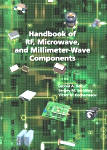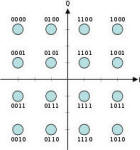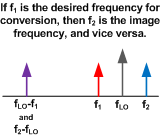 All RF Cafe Quizzes make great fodder for
employment interviews for technicians or engineers - particularly those who are
fresh out of school or are relatively new to the work world. Come to think of it,
they would make equally excellent study material for the same persons who are going
to be interviewed for a job. Bonne chance, Viel Glück, がんばろう,
buena suerte, удачи, in bocca al lupo, 행운을 빕니다,
ádh mór, בהצלחה, lykke til, 祝你好運.
Well, you know what I mean: Good luck! All RF Cafe Quizzes make great fodder for
employment interviews for technicians or engineers - particularly those who are
fresh out of school or are relatively new to the work world. Come to think of it,
they would make equally excellent study material for the same persons who are going
to be interviewed for a job. Bonne chance, Viel Glück, がんばろう,
buena suerte, удачи, in bocca al lupo, 행운을 빕니다,
ádh mór, בהצלחה, lykke til, 祝你好運.
Well, you know what I mean: Good luck!
Click here for the complete list of
RF Cafe Quizzes.
Note: Some material based on books have quoted passages.
Return to RF Cafe Quiz #46
 This quiz is based on the information presented
in Handbook of RF, Microwave, and Millimeter-Wave Components, by Sergey M. Smolskiy,
Leonid A. Belov, and Victor N. Kochemasov. This quiz is based on the information presented
in Handbook of RF, Microwave, and Millimeter-Wave Components, by Sergey M. Smolskiy,
Leonid A. Belov, and Victor N. Kochemasov.
 1.
What type of switch is shown to the right? 1.
What type of switch is shown to the right?
c) Transfer switch
A transfer switch in this case is a 2-position switch that allows simultaneous
signal re-routing between four ports. In this case either ports 1-4 and 2-3 are
connected, or ports 1-2 and 3-4 are connected. Transfer switches are often used
in redundancy schemes. (see page 214)
2. What is an adapto-attenuator?
a) Combination connector between-series adaptor and an attenuator
Adapto-attenuators are simultaneously the adapters; i.e., improve the section
matching and the coupling the connectors of different types, and provide the given
attenuation value. (see page 87)
3. What do we call the difference in decibels of the power
output at a coupled port, when power is transmitted in the desired direction, to
the power output at the same coupled port when power is transmitted in the opposite
direction?
a) Directivity
The difference in decibels of the power output at a coupled port, when power
is transmitted in the desired direction, to the power output at the same coupled
port when power is transmitted in the opposite direction. (see
page 116)
4. What is the main use of a circulator?
d) To unidirectionally direct signals from one port specifically to another
A circulator is a passive nonreciprocal three- or four-port device, in which
microwave or radio frequency power entering any port is transmitted to the next
port. (see page 124)
5. What is a lumped element element filter?
b) A filter constructed of standard wire-wound inductors and parallel plate
capacitors A distributed element is constructed from a circuit board trace having
a specific width and length that exhibits an impedance equal to a lumped element's
impedance at the same frequency. (see page 137)
6. What is a very desirable feature of a YIG (yttrium-iron
garnet) filter?
d) All the above
Frequency filters based on microwave YIG filters have the noticeable advantages:
high values of the Q-factor. opportunity of the electrical control by several octaves,
and high linearity of the medium frequency control. Bandpass filters can be made
to tune ranges as broad as 20:1 with few compromises in performance and even larger
ratios with trade-offs depending on actual frequency. (see page
150)
 7.
What does the image to the right represent? 7.
What does the image to the right represent?
b) 16-QAM constellation
Quadrature modulation uses in-phase and quadrature data streams to generate a
predictable combination of voltage-phase points that represent unique values. In
that case of 16-QAM, it allows 4 data bits to exchanged in a single clock cycle,
effectively multiplying the Baud rate so it is greater than the data clock rate.
(see page 16)
8. In which operational region of an amplifier is its1
dB compression point?
d) Nonlinear region
The 1 dB compression
point is the output power level where an input signal is amplified by an amount
that is 1 dB below its linear (normal) gain value. For instance, if an amplifier
had a linear gain of 20 dB when the input signal is 0 dBm, then its output power
would be +20 dB. If the amplifier with a linear gain of 20 dB only produced an output
of +19 dBm with a 0 dBm input signal, then its 1 dB compression point would be +19
dBm since the gain is reduced by 1 dB at that power level, hence, it is nonlinear.
Greater input power levels will experience an even lower gain.
(see illustration on page 249)
 9.
What is an image rejection mixer? 9.
What is an image rejection mixer?
a) A mixer that prevents the image frequency from appearing at the output
For any LO (local oscillator) frequency, there are two frequencies (RF input) that
will mix with it to produce the same output frequency (IF). One is the sum, and
one is the difference. The undesired of the two frequencies is the image frequency.
(see page 288)
10. What are the main electrical characteristics of a
reference oscillator?
d) Center frequency, stability, phase noise, harmonics, output power
As with most components, various circuit and mechanical configurations and frequency
determining elements (crystal, YIG puck, cavity, etc.) are traded off to get the
optimal performance for the requirement. (see page 357)
Posted September 9, 2020
|









 1.
What type of switch is shown to the right?
1.
What type of switch is shown to the right? 7.
What does the image to the right represent?
7.
What does the image to the right represent? 9.
What is an image rejection mixer?
9.
What is an image rejection mixer?